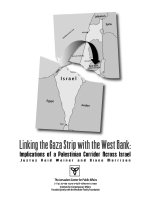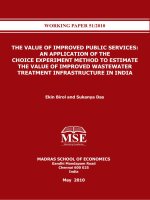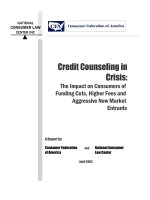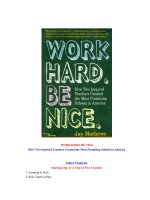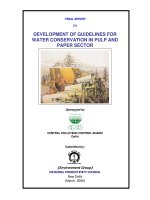The Diocese of the West Orthodox Church in America Parish Financial Audit doc
Bạn đang xem bản rút gọn của tài liệu. Xem và tải ngay bản đầy đủ của tài liệu tại đây (71.36 KB, 4 trang )
The Diocese of the West
Orthodox Church in America
Parish Financial Audit Guidelines
Diocese of the West, Orthodox Church in America
v1.00
22 November 2009
This is trial version
www.adultpdf.com
The Diocese of the West
Orthodox Church in America
Page 2 of 13
Table of Contents
Forward 3
Introduction 4
Guidelines 5
Getting Started 5
Verifying Income 6
Verifying Disbursements 8
Compensation and Taxes 8
Overview of Controls 9
Appendix A Audit Schedule #1 11
Appendix B Internal Audit Report (to be issued by Auditors) 12
Appendix C Donation Confirmation Letter 13
This is trial version
www.adultpdf.com
The Diocese of the West
Orthodox Church in America
Page 7 of 13
An example of a restricted gift would be:
Suppose Jane Doe gives $10,000 and simultaneously delivers a letter that her gift is to be used
to help buy a new furnace. If the gift is accepted, the $10,000 would be a restricted gift to be
accounted for in the church’s records as a restricted asset. Jane’s letter should be kept in the
church’s financial records and the money spent only to buy a new furnace.
A second example would be to suppose member Jack Roe gives $5,000 and writes to say that
his gift is to be invested and the income from it used to buy music for the choir. The $5,000 is a
restricted asset.
While both are restricted assets, the money for the furnace is called “temporarily restricted.”
That means that the donor‐imposed stipulation can be fulfilled by the action of the church in
deciding to buy that new furnace, then doing it. Assets that are “temporarily restricted” can
ultimately be spent, though they must be spent for the specified purpose.
The money given by Jack to be invested is “permanently restricted,” meaning that the full
$5,000 was stipulated by the donor to be held permanently. Note that the income from the gift
is to be used only for a specific purpose. To make a fine point, the income is temporarily
restricted in that it can be spent by action of the church in deciding to buy music, but the gift
itself is permanently restricted.
These two types of assets should be reported separately. The church cannot change any
restriction without the specific consent of the donor, which should be in writing.
Board Designated Assets are those assets that have been voted by the local church’s governing board,
such as its parish council or equivalent body, to be used for a particular purpose. For example, suppose
the board decides this fall to set aside from money on hand in the amount of $5,000 to send
parishioners next year to an appropriate Assembly meeting. Following the vote, the $5,000 should be
reported as a “designated” asset.
Because the stipulation for its particular use was made by the church itself, that stipulation (or
designation), can be changed by the action of the body that put it in place. There is no other party
involved as in the case of the receipt of restricted gifts. Next year, if the board decides, the $5,000 can
be better used for some other purpose, it can vote to apply the money for that purpose.
This is trial version
www.adultpdf.com
The Diocese of the West
Orthodox Church in America
Page 10 of 13
Authorization for Disbursements:
• Are there actions in the minutes of the board that address authorizations?
• The check signer should not be the authorizer of expenditures. The check signer may perform
bank reconciliations performed within a software program such as QuickBooks, but that
reconciliation should be checked by a different person.
Other:
Y N
Does the church have fidelity bond coverage for people handling funds (i.e.,
counters, financial secretary, treasurer, etc)?
Y N
Are decisions with financial implications being documented in minutes in sufficient
detail?
Y N
Are checks and cash stored in the church safe, deposited or placed in a bank night
depository, and not taken to private homes or elsewhere until deposited?
Y N
Are computer software and data files backed up on a regular basis, and are back‐ups
kept off the premises?
Y N
Do all appropriate persons have a clear understanding of and is there documentation
on church ownership of software and data files?
Y N
Is a current list of the contents of all safety deposit boxes maintained, and is a list of
persons with authorized access likewise kept?
Y N
Are loan documents being read and complied with?
Y N
Is there a policy on records retention, and if so, is it complied with (generally 7
years)?
Y N
Does the church have procedures in place to review its insurance policies for
adequate coverage?
Y N Have the exceptions (an N circled) been summarized in the final audit report.
This is trial version
www.adultpdf.com

